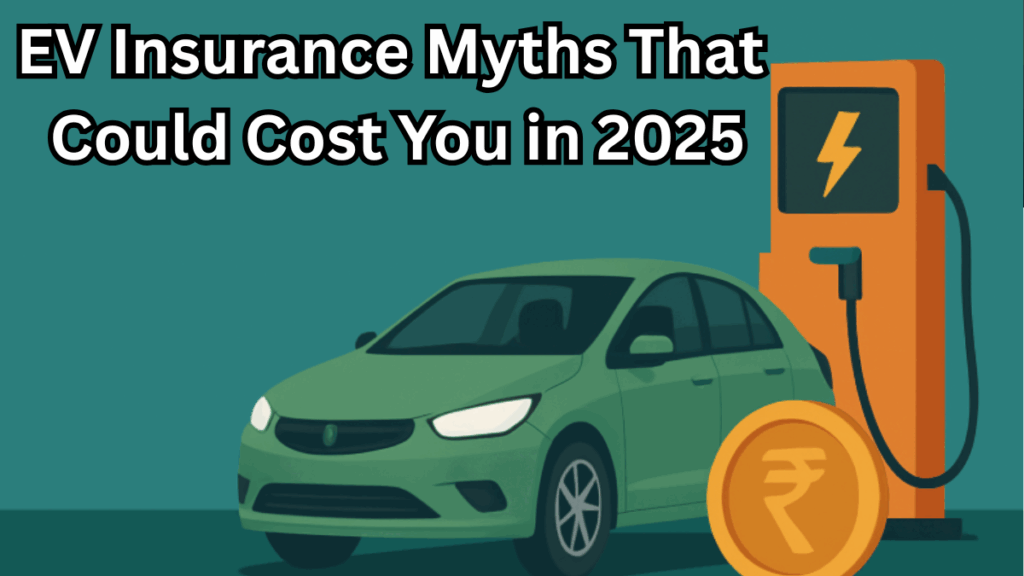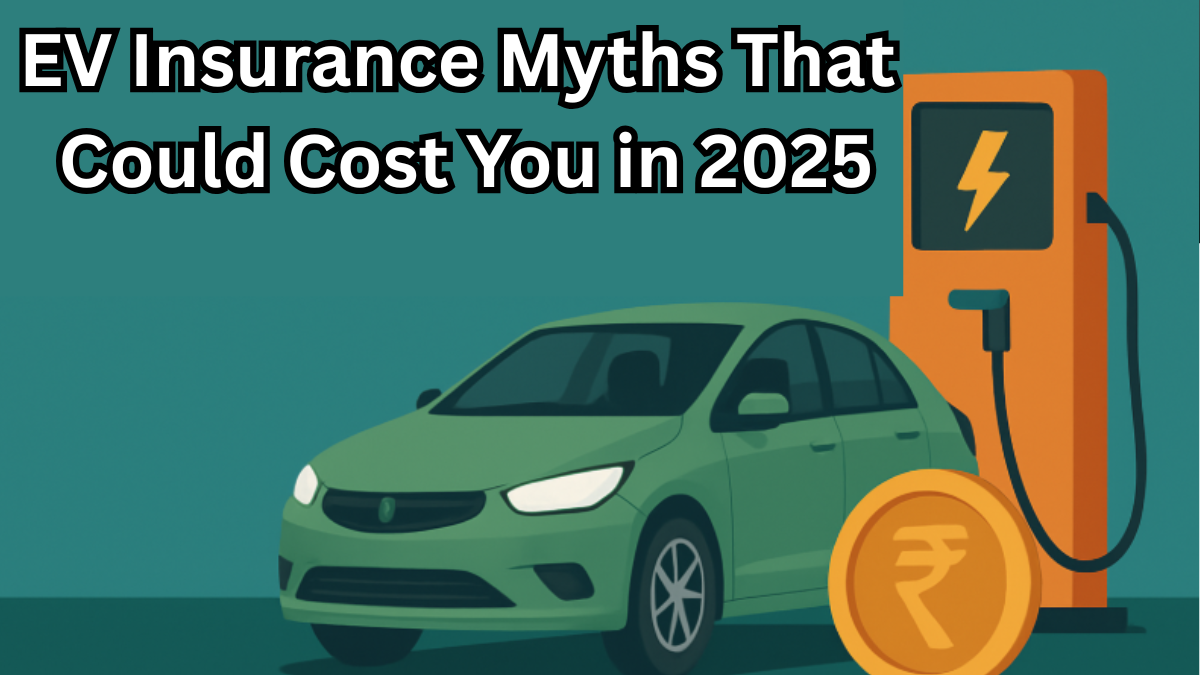Electric vehicles (EVs) are rising in popularity, but there’s still plenty of confusion when it comes to insurance. Unfortunately, several EV insurance myths are misleading buyers—and falling for them could cost you money or leave your car underinsured.
Here’s your clear-cut policy & coverage guide to help you stay informed in 2025.

Common EV Insurance Myths – Debunked
Myth #1: EVs Are Too Expensive to Insure
Reality: While EVs have slightly higher premiums due to advanced components like batteries, maintenance is much cheaper, and government incentives help reduce overall ownership costs.
| Vehicle Type | Average Annual Premium (₹) | Notes |
|---|---|---|
| Petrol Car | 8,000 – 12,000 | Lower repair costs |
| Diesel Car | 9,000 – 13,000 | Higher emission-based taxes |
| Electric Car | 10,000 – 15,000 | Includes battery and motor coverage |
Myth #2: EV Batteries Aren’t Covered
Reality: Most comprehensive policies include battery protection, especially for accidental damage. However, wear-and-tear or gradual degradation is typically excluded.
Tip: Look for policies with optional Battery Protection Add-ons in your policy & coverage guide.
Myth #3: Third-Party Insurance is Enough
Reality: Third-party insurance covers damages to others but offers no protection for your own vehicle. If your EV is stolen or damaged, you’ll bear the full cost unless you have a comprehensive policy.
| Insurance Type | Coverage Details | Ideal For |
|---|---|---|
| Third-Party Only | Covers damage to others | Budget-conscious buyers |
| Comprehensive Cover | Includes damage, theft, battery, etc. | Most EV owners |
Myth #4: EVs Don’t Need Add-On Covers
Reality: EVs come with unique risks like charging station malfunctions or battery damage. Add-ons can help you cover these.
Recommended Add-ons for 2025:
-
Battery Protection Cover
-
Roadside Assistance
-
Charger Damage Cover
-
Zero Depreciation Cover
These protect your investment and reduce out-of-pocket expenses.
Myth #5: Insurance Costs Are the Same Everywhere
Reality: Insurance premiums vary by:
-
City or region (urban areas = higher risk)
-
Vehicle model and battery capacity
-
Driving history and past claims
Your policy & coverage guide should always be tailored to your specific profile.
Tips to Avoid EV Insurance Pitfalls
-
Read the fine print before finalizing your policy
-
Compare policies from multiple providers—not just dealer-recommended ones
-
Ask about battery-related exclusions and add-ons
-
Keep your EV’s maintenance history updated
-
Take advantage of green vehicle or zero-emission discounts if available
FAQs
Q1. Are EV insurance premiums higher than petrol/diesel cars?
Slightly, yes. But the difference is often balanced out by lower running costs and tax exemptions.
Q2. Does EV insurance include charger or charging station damage?
Not by default. You must opt for an add-on cover that includes external charger or wall-box coverage.
Q3. Can I change EV insurance providers mid-policy?
Yes. You can port your policy and retain your No-Claim Bonus (NCB), just like with fuel-based vehicles.
Q4. Are EV battery replacements always covered by insurance?
Only if the damage is sudden and accidental. Routine battery degradation or wear-and-tear usually isn’t covered unless you purchase a Battery Protection Add-on.
Final Thoughts
Falling for EV insurance myths could leave you unprotected in critical moments. Use a trusted policy & coverage guide, review all terms, and select add-ons wisely. With the right coverage, your EV journey in 2025 can stay smooth, safe, and stress-free.
Click here to learn more
